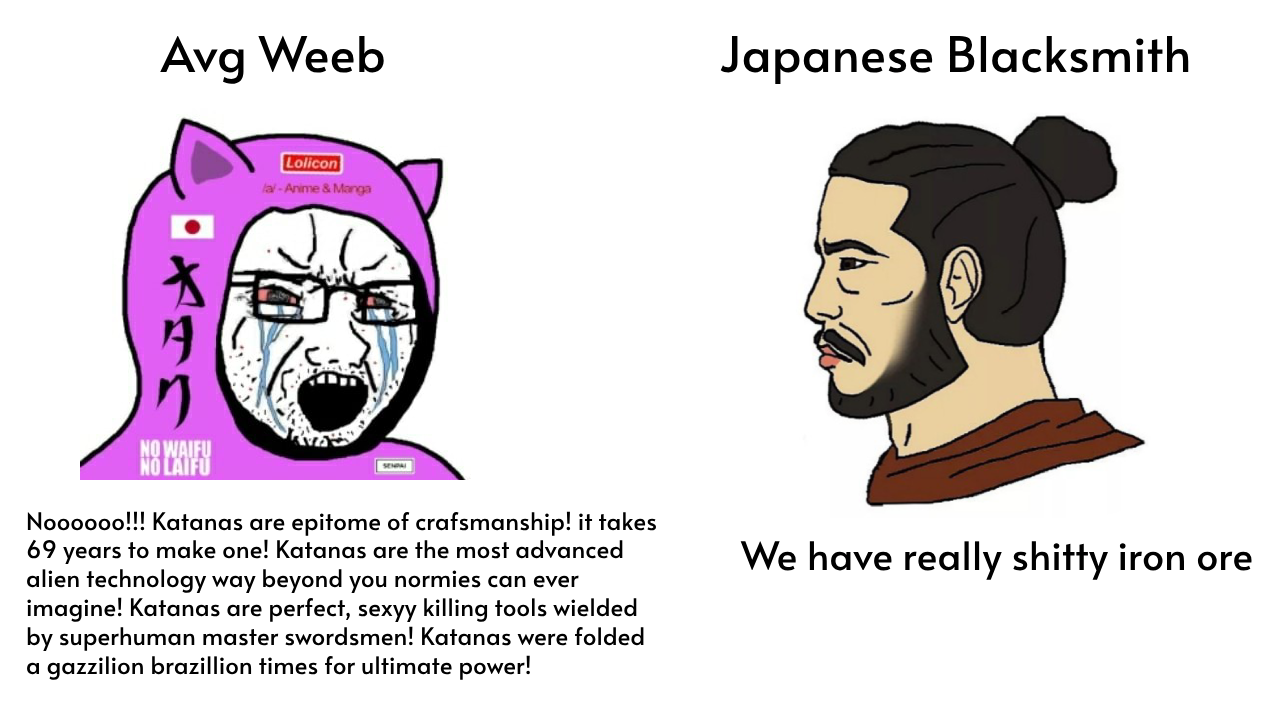this post was submitted on 10 Aug 2023
195 points (94.5% liked)
HistoryMemes
2558 readers
2 users here now
founded 4 years ago
MODERATORS
you are viewing a single comment's thread
view the rest of the comments
view the rest of the comments

Small details/tidbits of further info, referring to the article that OP linked:
Those two impurities are specially "poisonous" to steel, because they make it harder to work with and the end result is excessively brittle and easy to snap. Phosphorus technically makes it harder, but meh - if you need it harder, add carbon instead. For most part you won't want more than 0.05% of the weight of your steel in either phosphorus or sulphur. So it's no surprise that the Japanese blacksmiths were trying to beat it out of their steel.
Another impurity that they were likely beating out through the folding method was carbon. Carbon in steel needs to be within a certain range, ideally ~0.8%. (For reference, tamagahane was often around 0.5%~0.7%, rather close). As I said above it does make the steel harder, but also brittler; that's bad for a sword, it'll chip and break in no time. Note that steel with high carbon content is often not even considered "steel" but "iron" - like pig iron (~96% iron, ~4% carbon).
Odds are that it was even earlier. Toledo steel for example was produced in Carthaginian times, and it requires a rather similar folding technique - not to beat the impurities out, but to combine two types of steel together. (One was high-carbon steel giving it additional hardness, another was low-steel carbon for malleability. Some folks want to eat the cake and have it too.)